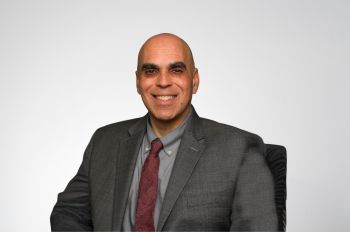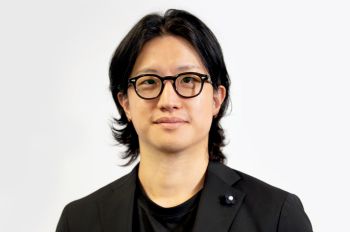At Illinois Tech, a Former Jewelry Designer Found Her Calling in Human-Centered Design

“The superpower I’ve always wanted to have, and it’s kind of a weird one, it’s to experience different peoples’ lives, and be a kind of fly on their brain,” says Sabah Asif. “I was really fascinated about what kind of lives people around the world live. That, I think, drew me to design, at least the human-centered part of design.”
Asif, who will be receiving a Master of Design and Master of Business Administration through a dual degree program offered by Illinois Institute of Technology’s Institute of Design this year, started her path on a more conventional route. She received her bachelor’s degree in design at University of New South Wales in Sydney, Australia, then began a career as a product and jewelry designer. However, she inevitably found the work to be unfulfilling.
“I found that I was sitting there doing drawing after drawing after drawing of something that would become a tiny little ring on someone’s finger. I really didn’t see a larger impact in that,” explains Asif.
On recommendation from a former professor, Asif started an internship at a Chemistry Consulting in Singapore, where she had the opportunity to work with health care professionals. “That was sort of when it clicked that this is the sort of work I want to do. So I Googled human-centric design, what it was, and how I could get a professional education in it,” says Asif.
Asif considered a number of schools, but she says the Institute of Design had the “right balance of tech, business, and design work.” Asif also says a number of designers from companies she admired were Illinois Tech alumni.
At Illinois Tech, Asif has enjoyed two packed years of indulging in her love of human-centered design, both through typical coursework and real-world projects, having had the opportunity to work with clients such as Morningstar, Peoples Gas, and Memorial Sloan Kettering Cancer Center, to name a few. Most recently, Asif has worked with the University of Chicago Pritzker School of Medicine, designing patient education material for women newly diagnosed with cervical cancer.
“Currently the material that exists already to educate people about cancer is text-heavy and full of medical jargon, so our job is to make all of that really easier for patients,” says Asif. “I remember an interview I did with a patient who was going through treatment. It’s really exhausting, she was tired, and she was with her sister who was being protective, but we did our job. At the end of the day, they were happy to find they were able to contribute through their experience in a way that’s going to help a larger audience of people being treated at hospitals around Chicago.”
While Asif is not exactly sure where the next chapter of her life will take her after graduation, she knows she wants to continue working in design consulting in health care or finance systems.
“Having gone through four years of design school as an undergrad and then two years of master’s education, I think at some point I found myself in a group of people, or a mindset, that rejected creating more stuff for a world that doesn’t need more stuff,” says Asif. “I think working in a space where my work can have an impact on the system level, where it actually affects how we live our lives, would be the highest achievement.”




